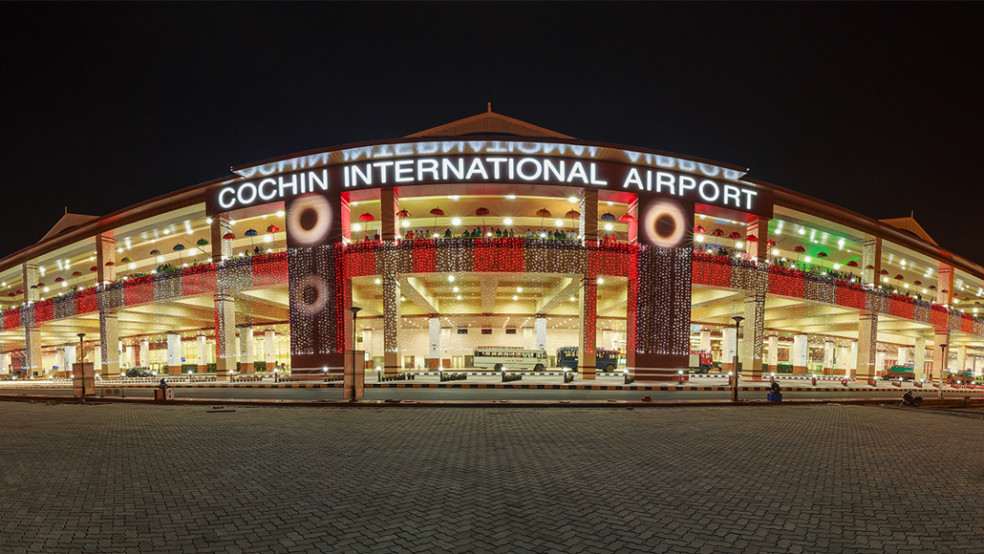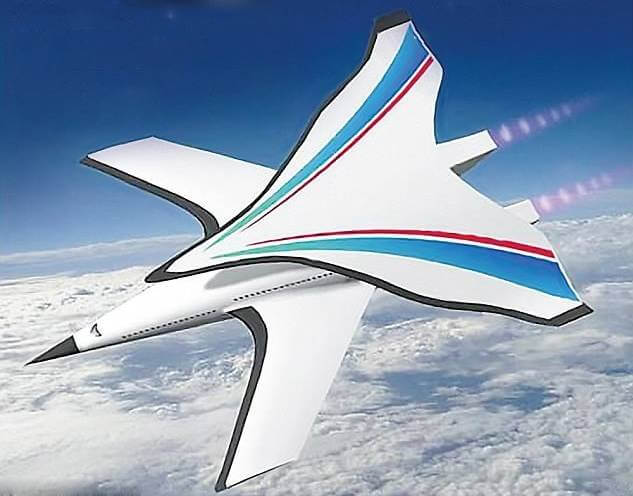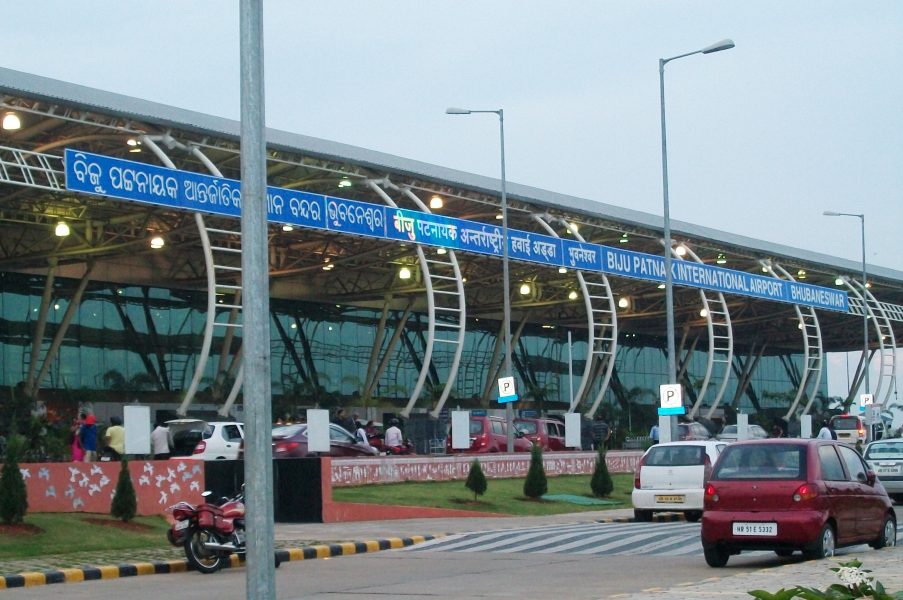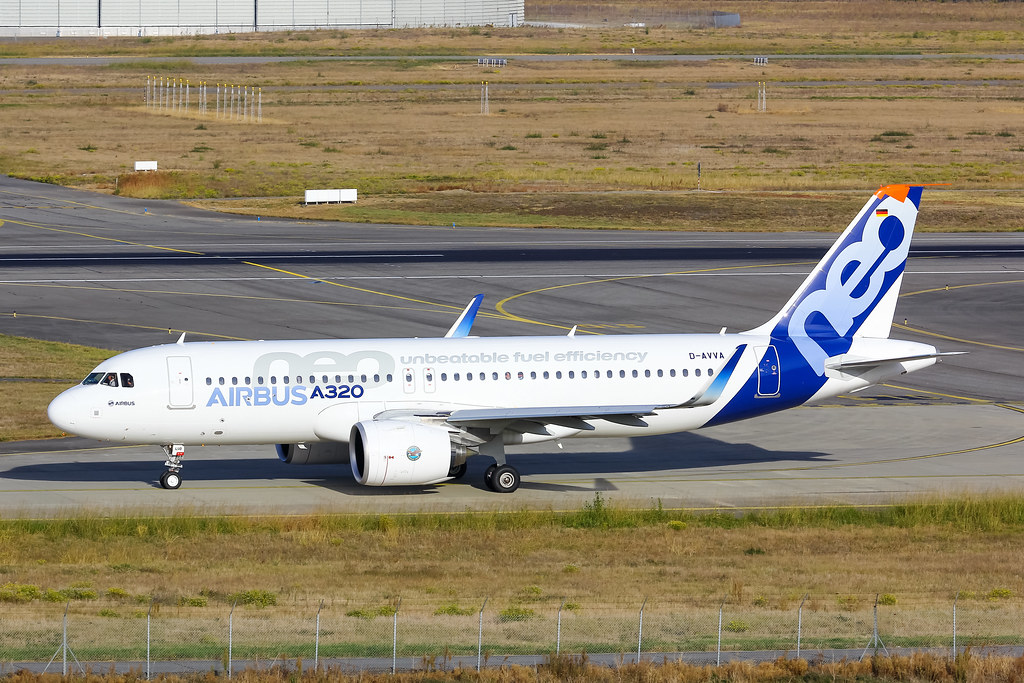Safran to set up a MRO facility for LEAP commercial aircraft engines in India
Radhika Bansal
04 Jul 2022
French aircraft engine major Safran is all set to announce a maintenance repair and overhaul (MRO) facility for leading-edge aviation propulsion (LEAP) commercial aircraft engines in India as part of its offset commitments.
The MRO facility said to be based either in Hyderabad or Bengaluru, will be announced on July 5 when Safran CEO Olivier Andres meets Indian Civil Aviation Minister Jyotiraditya Scindia.
The MRO state-of-the-art facility will be set up through a 100% Indian subsidiary route that will not only service some 330 engines used by Indian commercial carriers but also Safran-GE joint venture engines from other countries in South Asia, West Asia, and Africa.
Safran to set up an MRO facility for LEAP commercial aircraft engines in India
For the facility, SAFRAN is bringing in USD 150 million foreign direct investment with plans of moving into MRO of military engines used in Indian Air Force Rafale and Mirage 2000 fighters in the future to push the “Atmanirbhar Bharat” initiative.
The French company is the supplier of M88 engines for IAF’s recently acquired 26 Rafale multi-role fighters and is also the number one helicopter engine supplier to India.
Safran to co-develop with DRDO’s GTRE
Apart from the MRO facility, the French company has also submitted a proposal to the Indian government to co-develop with DRDO’s Gas Turbine Research Establishment (GTRE) a new state-of-the-art 110-kilo newton thrust engine for India’s futuristic advanced medium combat aircraft twin-engine AMCA fighter project.
Safran to co-develop with DRDO’s GTRE
The cost per engine for 400 engines will work out to 10-12 million euros, which is what we pay for engines today, said a defence expert. That will be for 400 engines, which is what we would need for twin-engine AMCAs if we have 6-7 squadrons. Will probably need more, the expert added.
The Safran offer is not subject to International Traffic in Arms Regulations (ITAR), a US regulatory regime to restrict and control the export of defence and military-related technologies to safeguard US national security and further US foreign policy objectives.
This means that the proposed Safran-GTRE joint venture will be exporting military engines to third countries without being subjected to restrictive regimes.
Tejas program with the LCA is now powered by GE-404 engines.
The French company believes that the new 110 KN engine could be certified by 2035, provided the co-development process gets a green signal this year. The full cost of co-development of the 110 KN engine will be around five to six billion euros.
While the DRDO is also looking at the GE-414 engine to power the AMCA project as an alternative, the Safran offer contains a performance guarantee and transfers all required technology for design, development, production and support besides creating a robust industrial aero-engine ecosystem in India.
The GTRE has been trying to develop the Kaveri aero-engine since 1996 and was originally developed to power Tejas LCA fighters. However, the engine was delinked from the Tejas program with the LCA now powered by GE-404 engines.
(With Inputs from The Hindustan Times)
Read next
Cochin International Airport starts technical landing facility for aircraft refuelling
Radhika Bansal
04 Jul 2022

Cochin International Airport Limited (CIAL) on Saturday, July 2 said it has started facilitating technical landing for refuelling of flights operating on the nearby international air route.
Having established itself as a major airport in the Indian sub-continent and capable of addressing technical requirements for aircraft up to Code E category, the in-built hydrant fuelling system at Cochin Airport meets the quick turnaround requirement of international carriers, said in a statement here.
The technical landing facility is being done for the first time in the history of Kochi airport. The last three days saw 9 aircraft flying either in Colombo-Europe or Colombo-Middle East sectors opting for Cochin airport’s technical landing capability and uplifted 4,75,000 litres of ATF from Kochi airport, it said.
https://twitter.com/KochiAirport/status/1543450650188451840
For the first time, Cochin International Airport (COK) has started facilitating technical landing for refuelling flights operating to Colombo, Sri Lanka. The airport can handle large twin-engine jets such as the B777, A330, A350, and B787.
With the fuel crisis in Sri Lanka looming large, airlines bound to Colombo from the Middle East or flying out from Colombo to the Middle East/ European destinations started using the route proximity advantage of Cochin airport.
Quick response by CIAL in terms of efficient apron management by making available a fuel hydrant system for such a requirement, more aircraft could effectively be accommodated on the apron without affecting scheduled operations in any way.
Cochin International Airport starts technical landing facility for aircraft refuelling
Since June 29, six flights operated by Sri Lankan Airlines bound to Sharjah, London Heathrow and Frankfurt, two flights operated by Air Arabia to Abu Dhabi and one flight operated by Jazeera Airways bound to Kuwait (all flying out from Colombo) used the technical landing facility of CIAL, the statement said.
"The management’s prompt response and adaptability to changing situations have helped connect with the foreign carriers and make available its fuel hydrant system to tide over a commercial aviation crisis.When we have foreseen the change in fuel distribution dynamics in the region, we upped the ante by recalibrating our apron management systems. Now more airlines have started contacting us and we are sure that this will boost our revenue potentials."S Suhas, Managing Director, Cochin International Airport Limited (CIAL)
There are many airports in the world doing more business in technical landing compared to regular operations. The system established at Cochin Airport has the potential to serve more airlines, whether for a planned stopover or any unplanned technical stopovers, the company said.
CIAL said it has started discussions with airlines using this flying route offering to make use of its facility.
It is the busiest and largest airport in the state of Kerala and the 4th biggest airport in South India
Cochin International Airport is an International airport serving the city of Kochi, Kerala, India. Located at Nedumbassery, about 25 km northeast of the city centre, Cochin International Airport is the first of its kind which is developed under a public-private partnership (PPP) model in India. This project was funded by nearly 10,000 non-resident Indians from 32 countries.
It is the busiest and largest airport in the state of Kerala and the 4th biggest airport in South India. As of 2019, the Cochin International Airport caters to 61.8% of the total air passenger movement in Kerala.
It is the third busiest airport in India in terms of international traffic and also the ninth busiest overall. In the fiscal year 2018–19, the airport handled more than 10.2 million passengers with a total of 71,871 aircraft movements.
Read next
55% of IndiGo domestic flights delayed due to crew calling in sick; DGCA seeks explanation
Radhika Bansal
04 Jul 2022
55% of IndiGo domestic flights were delayed on Saturday, July 2 as a significant number of cabin crew members took sick leave, with sources in the industry saying they ostensibly went for an Air India recruitment drive.
When asked about this, Arun Kumar, who heads the aviation regulator DGCA, told PTI on Sunday, July 3, We are looking into this.
"Directorate General of Civil Aviation (DGCA) has taken strong cognizance of IndiGo operations and sought a clarification/explanation behind the massive flight delays nationwide," DGCA officials told ANI.
55% of IndiGo domestic flights delayed due to crew calling in sick; DGCA seeks explanation
Many of the crew members, who opted for sick leave, are said to have lined up for the Tata Group-owned carrier’s interviews in metros such as Delhi, Mumbai, Kolkata, Hyderabad and Bengaluru. As a result, pilots inside many IndiGo planes and passengers at terminals kept waiting for their flights to take off and a few flights had to be cancelled, said sources.
The phase-2 of Air India's recruitment drive was conducted on Saturday, July 2 and a majority of IndiGo's cabin crew members who took sick leave went for it, the sources in the industry added.
IndiGo, India's largest airline, which currently operates approximately 1,600 flights --domestic and international -- daily was hit by the non-availability of crew members resulting in the delayed departure of 900 flights.
Many of the crew members, who opted for sick leave, are said to have lined up for the Tata Group-owned carrier’s interviews in metros such as Delhi, Mumbai, Kolkata, Hyderabad and Bengaluru.
According to the Ministry of Civil Aviation's website, 45.2% of IndiGo's domestic flights operated on time on Saturday, July 2. Nearly 30% of IndiGo flights were delayed on July 3.
In comparison, the on-time performances of Air India, SpiceJet, Vistara, Go First and AirAsia India was 77.1%, 80.4%, 86.3%, 88% and 92.3%, respectively, on Saturday, July 2.
IndiGo CEO Ronjoy Dutta on April 8 told employees through an email that raising salaries is a difficult and thorny issue but the airline will constantly review and adjust wages based on its profitability and the competitive environment.
ALSO READ - IndiGo CEO Ronojoy Dutta addresses salary concerns, says will review wages regularly
IndiGo had on April 4 suspended a few pilots who were planning to organise a strike the next day to protest against the pay cuts that were implemented during the peak of the COVID-19 pandemic.
Nearly 30% of IndiGo flights were delayed on July 3.
ALSO READ - IndiGo partially restores pilot salaries by 8% from April 1
The Tata Group took control of Air India on January 27, after successfully winning the bid for the airline in October 2021. Air India plans to buy new planes and improve its services, and it recently started a recruitment drive for fresh cabin crew members.
Air India is "clearly reorganising" itself under the "able stewardship" of the Tata Group and wants to invest in new planes to regain international passenger market share, Christian Scherer, Chief Commercial Officer of aircraft manufacturer Airbus, said on June 19 in Doha.
During the peak of the pandemic, Indigo had slashed the salaries of its pilots by as much as 30%.
The phase-2 of Air India's recruitment drive was conducted on July 2 and a majority of IndiGo's cabin crew members who took sick leave went for it
On April 1 this year, the airline announced its decision to increase the salaries of pilots by 8%. It said that another hike of 6.5% will be implemented from November onwards in case there are no disruptions. However, a section of pilots remained unsatisfied and decided to organise a strike.
ALSO READ - IndiGo pilots suspended for planning a strike to protest pay cuts
Domestic air passenger traffic had jumped to 1.2 crores in May 2022, marking a surge of 11% as compared to the preceding month, as per the data shared by the Directorate General of Civil Aviation (DGCA) on June 22.
The numbers indicate that the air traffic has inched closer to the pre-pandemic level, as the domestic airlines had cumulatively ferried a total of 1.22 crore passengers in May 2019. In the past month, IndiGo's passenger load factor increased to 81%, as against 78.7% in April 2022.
On April 1 this year, the airline announced its decision to increase the salaries of pilots by 8%.
While IndiGo’s case is a one-off, airlines across the world are forced to cancel flights because of staffing issues. Carriers in Europe and the US are cancelling thousands of flights.
Lufthansa has cancelled 3,100 flights scheduled in July and August. American Airlines cancelled close to 4,500 flights, Delta Air Lines over 2,700 flights and United Airlines close to 2,000 flights according to global reports.
In London’s Heathrow airport, chaos has ensued due to massive understaffing. This included hundreds of cancelled flights as the airport can’t handle them, long queues and thousands of baggage items being untraceable.
Read next
Odisha Chief Minister Naveen Patnaik has said that direct flights will be operated between Bhubaneswar to Dubai very soon. He made this announcement while addressing the Odia diaspora in Dubai.
Nearly one lakh people of Odisha live in the United Arab Emirates. Direct air connectivity between Dubai and Bhubaneswar has been their long-pending demand.
The chief minister's private secretary VK Pandian, who is accompanying Patnaik on the foreign tour, said that the Odisha government has already proceeded with a viability gap funding (VGF) plan for direct flight services between Dubai and Bhubaneswar.
Direct flights from Bhubaneswar to Dubai soon - Odisha CM
VGF is a grant provided to support infrastructure projects that are economically justified but fall short of financial viability.
While attending the programme, Chief Secretary SC Mohapatra said that the Odisha government will give subsidies to airlines willing to operate direct flights from Dubai to Bhubaneswar under the VGF scheme.
Once the air route becomes economically viable, the government need not give subsidies to the airlines
In that arrangement, the government provides subsidies to flight operators for a period of three to six months for new destinations expecting that the operations would be financially viable within that period.
Once the air route becomes economically viable, the government need not give subsidies to the airlines, Mohapatra said.
The scheme was introduced for international flights from Bhubaneswar to Malaysia and Thailand two years ago. Later, it was extended to domestic flights, official sources said.
Read next
China completes testing of "Nanqiang No.1" - a revolutionary hypersonic airliner technology
Prashant-prabhakar
03 Jul 2022

According to Chinese media reports, a small prototype hypersonic aircraft for civilian use has finished the first stage of testing in China.
The prototype dubbed - "The Nanqiang No 1" is likely to be a technology demonstrator for a hypersonic airliner and has been tested in a laboratory in Fujian Province, China.
Reportedly, the unmanned aircraft weighs just 500kg (1,100 pounds) and can hit five times the speed of sound or faster. Apparently, three different types of power systems have been integrated into its small body- a design which seemed to be inconceivable initially.
The unique power system, also known as "MUTTER' - acronym for "multi-ducted twin-turbines ejector-ramjet/scramjet", includes a pair of turbine engines, a small rocket and two air-breathing ramjets or scramjet engines.
scmp.com
The breakthrough of this technology will greatly shorten the round-the-world flight time.Lead project scientist Yin Zeyong wrote in a paper published last week in Acta Aeronautica et Astronautica Sinica, a peer-reviewed journal run by the China Society of Aeronautics and Astronautics
Reportedly, Yin’s team stuck to the MUTTER design despite it being more complex than most hypersonic flight vehicles proposed prior. One of the main challenges faced by the team was forcing three different types of engines to share a single air inlet, something which computer modelling, ground testing and early test flights showed were possible.
According to the researchers, the two turbines could provide a high thrust at a speed below Mach 2 upon take-off. The rocket engine would then accelerate the aircraft to Mach 4. Subsequently, the sub-ramjet above and the main-ramjet below the aircraft would ignite and take the plane to a cruising speed at Mach 6.
Representative | Air Force Technology
The reusability of the small rocket engine after being subject to work in an extreme environment is uncertain.
Yin further said that for the airline to be commercially viable, the technology must be more efficient as a hypersonic airliner would carry 10 adult passengers, making up only about 2 per cent of its weight.
Researchers test a component of Nanqiang No 1 hypersonic unmanned aircraft in a laboratory in Fujian province. Photo: Xiamen University, Science and Technology Daily
Although the project is beset with technological challenges, the construction of a full-sized passenger plane with a total weight reaching 72 tonnes would likely begin before the end of the six-year programme.
The design team would also have to work on an effective plan to slow down and land the aircraft quickly in an emergency.
SOURCE(s)
COVER: Aviation A2Z
Read next
Airbus SE won one of its biggest-ever orders for 292 airliners worth more than USD 37 billion from four Chinese airlines, a coup for the European manufacturer as it tussles with Boeing Co. for dominance in Asia’s largest economy.
China Eastern Airlines Corp. will buy 100 A320neo narrow-body jets, while Air China Ltd. will take 64 units, with its Shenzhen Airlines subsidiary acquiring 32 more, according to separate company filings. China Southern Airlines Co. said earlier it would buy 96 A320neos, as well as lease additional planes.
The announcements represent China’s first major jetliner orders in about three years and help cement Airbus’s position in the market, where the European manufacturer has built an advantage thanks to a local final assembly line.
Chinese airlines orders 292 Airbus A320neo aircraft (Image Courtesy - AeroTime Hub)
Boeing has historically counted China Southern as its biggest customer, but business has slowed for the manufacturer in the wake of two crashes of its best-selling 737 Max model and as political tensions rise between Washington and Beijing.
Boeing reacted sharply to the announcement, unusually crediting "constructive dialogue" between European governments and Beijing for the blockbuster order and urging the U.S. and Chinese governments to engage in productive discussions.
The orders were announced to add to robust demand from China. Airbus secured a USD 35 billion jet deal during a state visit by President Xi Jinping to the French capital in March 2019. Both manufacturers will be vying for more business at the Farnborough Air Show, which kicks off in the middle of the month at a venue south of London.
Boeing has counted China Southern as its biggest customer, but business has slowed for the manufacturer in the wake of two crashes of its best-selling 737 Max
Airbus gained as much as 4.9% in Paris. Boeing rose as much as 3.7% in US trading.
The China Southern aircraft will be delivered from 2024 to 2027, according to a stock exchange filing Friday, July 1. The carrier will separately lease 19 A320neos. Handovers to Air China will span from 2023 to 2027 and those to Shenzhen Airlines from 2024 to 2026.
China Southern in May removed more than 100 of the US firm’s 737 Max jets from its near-term fleet plans, citing uncertainty over deliveries. The airline previously outlined plans to rapidly expand its 737 Max fleet, saying in March that 39 were due this year, building toward a total of 103 deliveries through 2024.
Airbus secured a USD 35 billion jet deal during a state visit by President Xi Jinping to the French capital in March 2019.
None of China’s other state-owned carriers has said if they might resume taking the Max once it’s officially back in service. China was the first to ground the plane following fatal crashes in Indonesia in October 2018 and Ethiopia in March the following year.
Still, Boeing managed to outsell Airbus in 2021 for the first time in three years on demand for the 737 Max. The planemaker notched 909 gross orders in 2021, compared with 771 sales at Toulouse, France-based Airbus.
Since the Max grounding, Airbus has surged ahead of Boeing in grabbing orders and market share for narrowbody jets, even as the European planemaker struggles with ramping up production to meet surging demand. Last month, Chief Executive Officer Guillaume Faury said a delayed arrival of engines meant Airbus was unable to deliver otherwise fully built jets.
At the end of 2021, China Southern -- the country’s largest airline -- had a fleet of 399 Boeing narrowbodies
To meet its growing backlog, Airbus is pushing ahead with ambitious plans to ramp up production of its bestselling A320 family of jets to 75 a month by 2025 as it looks to widen its lead. Airbus wants to begin making the larger A321neo at its site in Tianjin by year-end.
Fast-growing Indian budget carrier IndiGo, operated by InterGlobe Aviation Ltd., is the world’s largest customer for A320neos, having ordered 730 of those jets.
At the end of 2021, China Southern -- the country’s largest airline -- had a fleet of 399 Boeing narrowbodies, according to its latest annual report. It also had 334 Airbus A320 series narrowbodies at the end of 2021.
China Eastern has been roiled by the crash of a Boeing 737-800 jet in March, killing 132 people on board.
ALSO READ - China Eastern B737-800 crash – here’s what is known so far
China Eastern has been roiled by the crash of a Boeing 737-800 jet in March, killing 132 people on board. Investigators are examining the actions of the crew, with no evidence found of a technical malfunction, people briefed on the matter have said.
ALSO READ - Airbus plans to increase production of its single-aisle narrowbody A320-family jets in 2023
ALSO READ - The Airbus-Boeing duopoly – can it ever be broken?
(With Inputs from Bloomberg)
Cover Image - Nathan Walkowiak (Flickr)




Comment